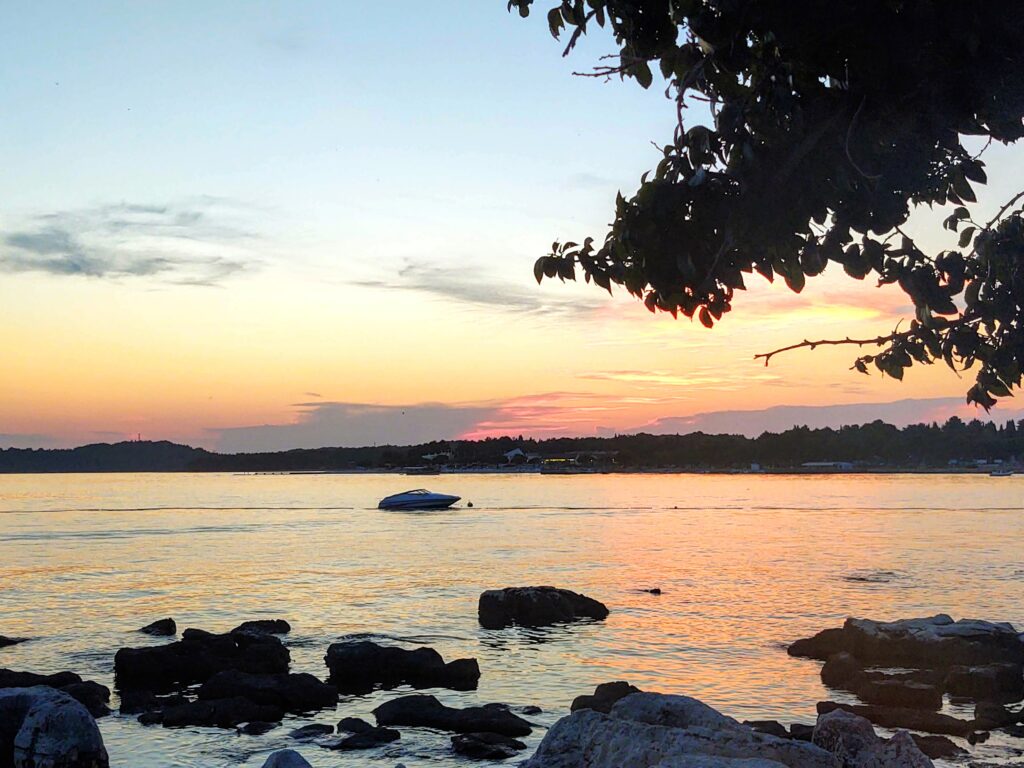
Istria – things to know and places to see
Istria is the largest peninsula in the northern Adriatic Sea. The peninsula is big and varied. It’s home to numerous historical and natural attractions. There’re many amazing places to see and things to do, including wandering the narrow street of Rovinj, snorkeling the crystal-clear water or observing the animals of Brijuni islands. Istria is a flawless destination for a summer vacation, and in this guide, you’ll get to know more.
BEST TIME TO VISIT
The climate is mild. The temperature during summer: July and August exceed 30 Celsius degrees. It’s therefore perfect for sunbathing, water sports, swimming and in general relaxing by the water. If you think of sightseeing, it may be a bit too hot to wander from dawn to dusk. It’s better to reserve time in September or May for a typical city tour.
Overall, it’s about 2,400 hours of sunshine per year you can count on.



TRANSPORT
It’s around 100 kilometers from the most southernmost part of Istria to the northernmost one. The best way to travel throughout Istria is by car. Public transportation is unfortunately limited in this region. A limited train service links Buzet to Pula, with several stops in smaller towns along the way. There are no direct train connections between Istria and the rest of Croatia.
There’s an airport in Pula with domestic and international seasonal flights operating generally from April to October. Another close one is in Rijeka with several connections including Berlin, Warsaw or Eindhoven.
Venezia Lines ferry runs between April and October from Venice to the Istrian port towns of Poreč, Rovinj, Umag, or Pula.
PRICES IN ISTRIA
Istria is definitely less expensive than Dalmatia, but the prices differ between different cities in the region. It’s cheaper in the biggest port city: Pula than in Rovinj.
But let’s take a look at some product prices to give you an overview:
| In a restaurant: Pizza 70 kunas. Cevapcici: 80 kunas Beer: 40/50 kunas Fish burger: 90 kunas | Souvenirs Magnets: 30 kunas Bracelets: from 50 kunas Postcards: 5/10 kunas |
| In a grocery shop: Bread: 10 kunas Cevapcici: around 30 kunas per 400 gram Beer: 15 kunas Shopping for 2-3 days: 500 kunas Chocolate: 15 kunas | Entrance to attractions: Dino Park: 200 kunas Pula Arena: 70 kunas 1 hour long boat cruise: 100 kunas Aquapark Istralandia: 240 kunas |
MONEY
It’s better to have some cash with you. Especially, places like vegetable markets, souvenir stalls or ice-cream kiosks do not accept cards. Exchange in a trusted place. On the spot you can exchange euro to kunas. If you need to exchange from another currency it’s better if you do that before your trip.
When withdrawing money from ATM in Croatia you’ll pay extra 30 Kuna for it.



ACCOMMODATION
Istria is full of campsites, mobile homes, apartments for rent, or hotels. Surprisingly, a 3-star campsite is luxurious compared to a 3-star camp by Balaton. So, in good conscience, I can recommend campsite Polari, even the tents where we’ve been.
But of course, if you’re looking for a slightly different type, here are some tips:
Superb 4-star hotel in Rovinj or cheaper apartments with a few minute walk from the beach:
You can also find some bed&breakfast, this time in Porec, with super-reviews and excellent location.
Pula can also offer a range of accommodation, from budget ones to top-rated hotels. Check it out here.
The key is to book in advance so that you have plenty of objects and a price range to choose from. We’re already past time when we could come to Croatia and start searching for a place to spend a night on the spot, because even campsites are fully booked!

PLACES TO SEE
Rovinj – A picturesque, romantic town located on the shores of the azure Adriatic Sea. It’s full of atmospheric cobbled streets, colorful houses and beautiful hand-made souvenirs. In antiquity, Rovinj was an island, and today the charming port town has become a place widely loved by all kinds of artists.











Pula – the largest port city of Istria. Mainly known by the ancient Amphitheater called the Arena. In addition to the former arena of gladiatorial struggles, Pula offers a multitude of ancient monuments, such as the Temple of Octavian Augustus, the Arch of Sergius, and the Gate of Hercules. For lovers of antiquity, it is a basic point when visiting Istria.








Porec – a city known for its charming and elegant promenade with tall palm trees, luxurious hotels, and great views. It’s worth taking a walk, admiring the coastline or hoping of between the souvenir shops. You can find real gems here! Don’t forget to sit by a charming cafe and observe the crowd!






Lim Channel – located between Vrsar and Rovinj, it’s primarily a place, where seafood, especially oysters and clam is grown. It’s also a landscape similar to Scandinavian fjords. It’s worth just to hop of the car to see this beautiful natural gem on your way to Pula for example.

Brijuni Islands – the archipelago of 14 islands with a national park and safari park. During hot summer days, it seems impossible to visit because of the scorching sun. The easiest way is to get from Fazant.
IS THAT ALL?
Istria is a relatively geographically small region, with a car, it’s easy to explore. One week in a region and one can transfer to magical streets of medieval old towns, nature parks, adventure parks or ancient times with ruins and evidence of habitation left by Romans. And don’t limit yourself to the few cities I mentioned, because each of them has its charm: Vrsar, Fazana, Motovun or Medulin.
Share this:
You May Also Like

Bohemian Switzerland – Belveder viewing point
November 22, 2014
Szczyrk Mountain Resort in Poland
January 7, 2025


